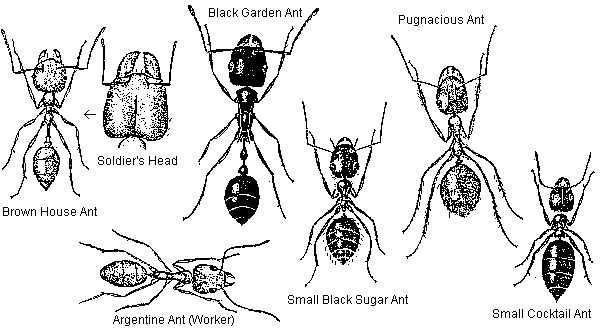
Home
Mission
Overview of Project
Project Staff
Sponsors
Achievements
Checking, Illustrations
Upcoming Activities
Id and Species Lists
Protea Information
Protea Gallery
Growing Proteas
Interim Dist. Maps
Publications
Afrikaanse Inligting
![]()
Phloeonomus looks at Myrmecochory
| "Look at that word!" said Phloeonomus to the ant who had stopped by for a drink of nectar in the Protea head where Phloeonomus was taking his noon-day nap. "`Myr-me-co-chory' - why can't people talk English instead of using long, unpronounceable names. What does it mean?" |  |
"Can't stop to talk" said ant, "it's the Pincushion seeding season. I've got hundreds of seeds to carry to the nest. My sisters are all waiting for me!"
"Wait, don't run away" shouted Phloeonomus, "Who are you?"
"Can't you see I'm Myrmecos the ant, you silly old bug!" said Myrmecos, climbing out of the head and disappearing out of sight.
"I'm not a bug, I'm a beetle" shouted Phloeonomus crossly, and decided to go back to sleep. "Just a minute" thought Phloeonomus, his eyes getting droopier by the minute, "if Myr-me-co is ant, then that means... that's it - a chory is a bakkie which transports goods, so myr-me-co-chory must be things carried by ants! But what are they carrying?"
Alas, that's when the warmth of the cosy Protea head lulled Phloeonomus into his noon-day siesta. Do you know what the ants were carrying?
Phloeonomus was very interested in myr-me-co-chory so he decided to experiment with some ants. You might try these experiments too. In December and January when the Pincushion flowerheads were brown and beginning to fall off the plants, releasing their seeds, he collected a lot of seeds. Of course, there were only a few seeds per flowerhead, but he collected many. He also collected some protea seeds. Then on the very next sunny day he went and put the seeds in piles of five at different distances from an ant's nest: very near, near and far. He then sat down close enough to watch, but far away enough not to be bitten. How long did the ants take to collect the seeds? Which piles did they take first? Did they collect both the protea and pincushion seeds equally well? He did the same experiment at different types of ant's nests. Did they behave in the same way? How long did they take to remove all the seeds?
Here are some of Phloeonomus's results, on the form he drew up to make recording his data easy. He did not finish because he fell asleep!
Read William Bond's article on Watching Seeds and see if you can plan more experiments to find out more about myrmecochory, elaiosomes and those Argentinian Ant invaders. Phloeonomus would love your results, because he desperately wants to know how his experiment would have ended.

Back Phloeonumus Corner